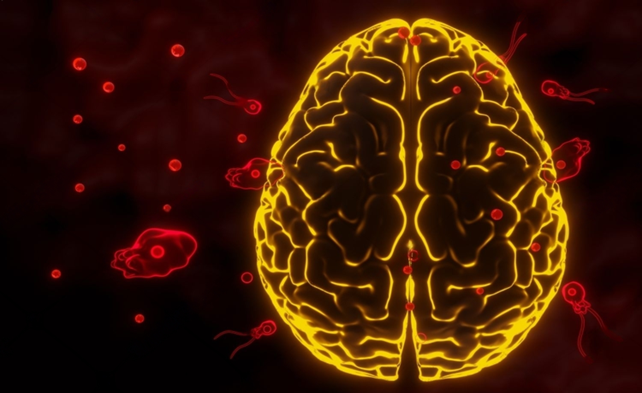Introduction
Ludwig van Beethoven (1770 to 1827) remains among the most influential and popular classical music composers of all time. His immortal melodies continue to resonate with audiences worldwide, transcending time and captivating generations. Yet, behind the genius of this musical titan lies a story of personal struggle, shaped by profound health problems that impacted both his career as a composer and pianist. From progressive hearing loss to recurring gastrointestinal complaints and liver disease, Beethoven’s journey was marked by physical challenges that shaped the very fabric of his compositions.
In a remarkable quest for answers, scientists have embarked on a groundbreaking genomic analysis, unraveling the mysteries encoded within Beethoven’s DNA. Through the application of cutting-edge techniques, including the study of authenticated strands of hair attributed to the maestro, researchers have embarked on an extraordinary voyage into the genetic makeup of this legendary composer. The discoveries they have made are nothing short of remarkable, shedding light on Beethoven’s genetic predisposition for liver disease and even uncovering evidence of a hepatitis B infection. Furthermore, an unexpected twist in Beethoven’s patrilineal ancestry reveals a captivating secret within the tapestry of his genetic lineage.
Let’s unravel the curious case of Ludwig van Beethoven, thanks to modern DNA extraction techniques, genome-wide association studies, and eight locks of hair.

Authenticity of Beethoven’s genome
Researchers have identified eight locks of hair attributed to Ludwig van Beethoven, with four having a documented chain of custody. DNA analysis confirms that five of these locks originated from Beethoven himself, providing strong evidence of their authenticity. However, the remaining three locks, including the Hiller Lock associated with lead poisoning speculation, have been determined to come from unrelated individuals. Surprisingly, DNA analysis of the Hiller Lock reveals it to belong to a woman with North African, Middle Eastern, or Jewish ancestry, dispelling the theory of lead poisoning in Beethoven’s case. Furthermore, Beethoven’s ancestry aligns closely with ethnic German populations, with living van Beethoven descendants primarily found in Belgium.

The Halm-Thayer Lock and the Bermann Lock, both authenticated by the study.

The Hiller Lock. Ira F. Brilliant Center for Beethoven Studies, San Jose State University.
However, a scandalous revelation emerges from the analysis—the Y-chromosome inherited by Beethoven does not match that of his documented paternal ancestor, suggesting the occurrence of an extramarital paternity event in his patrilineal ancestry. These findings prompt new questions about Beethoven’s true biological lineage.

Geo-genetic triangulation of Beethoven’s probable ancestor locations
Origins of Beethoven’s diseases
With five locks of hair now confirmed to belong to Beethoven himself, researchers eagerly turned to DNA analysis in search of explanations for the maestro’s three major health issues: his hearing loss, gastrointestinal problems, and liver failure.
However, the results regarding his hearing loss proved disappointing.
Despite exploring his genetic makeup, no definitive genetic cause for his hearing loss was found. The authors acknowledge the limited information available regarding the genetic risk factors for otosclerosis, which has often been associated with Beethoven’s hearing loss. While lead poisoning remains a possibility, it’s important to note that this report focuses solely on genetics, with no direct testing conducted for lead. Furthermore, the lock previously identified as having high levels of lead is now considered to be inauthentic, casting doubt on the lead poisoning theory.
What about his lifelong GI complaints?
Similar to the results for hearing loss, no molecular genetic explanation was found for Beethoven’s gastrointestinal complaints.
However, important diagnoses such as celiac disease and lactose intolerance can be largely ruled out as potential causes. While the presence of irritable bowel syndrome (IBS) is less likely based on the findings from polygenic risk score (PRS) analysis, it cannot be completely disregarded due to the limited diagnostic power of the IBS PRS.
The most significant findings pertain to Beethoven’s liver disease. The elevated PRS for liver cirrhosis, including a strong genetic risk factor in the PNPLA3 gene, suggests that Beethoven inherited a considerable genetic predisposition. Additional contribution from compound heterozygosity in the HFE gene may have played a role. Although the clinical significance of the HFE diplotype remains uncertain, the combination of excessive alcohol consumption, the genetic predisposition, and potential iron overload could have had unfavorable effects on Beethoven’s liver health.
Furthermore, the analysis revealed the presence of a hepatitis B virus (HBV) infection in Beethoven, likely occurring in the months leading up to his death. The exact nature and timing of the infection cannot be determined with the available data, but it is evident that the interplay between Beethoven’s substantial genetic predisposition, HBV infection, and alcohol consumption could have contributed to his liver disease. However, the specific causal pattern of these factors remains uncertain at this time.
As we delve into the results, it’s astounding to realize how our fascination with Beethoven continues to drive us to explore every aspect of his existence—his letters, writings, medical records, and now, even his DNA—two centuries after his passing. But what are we truly seeking in this quest? Do we genuinely need to unravel the mysteries behind his hearing loss, stomach troubles, and demise? Will it provide tangible benefits to future patients? Perhaps, what we are truly after is something intangible—an understanding of the extraordinary genius that is seldom witnessed in a single lifetime, let alone across generations. The tools of science, despite their sharpened precision, still pale in comparison to the profound depths of that ethereal transcendence.
Reference
- Begg TJ, Schmidt A, Kocher A, Larmuseau MH, Runfeldt G, Maier PA, Wilson JD, Barquera R, Maj C, Szolek A, Sager M. Genomic analyses of hair from Ludwig van Beethoven. Current Biology. 2023 Apr 24;33(8):1431-47.



